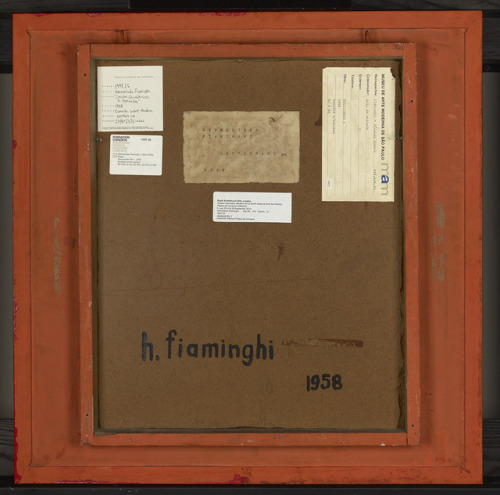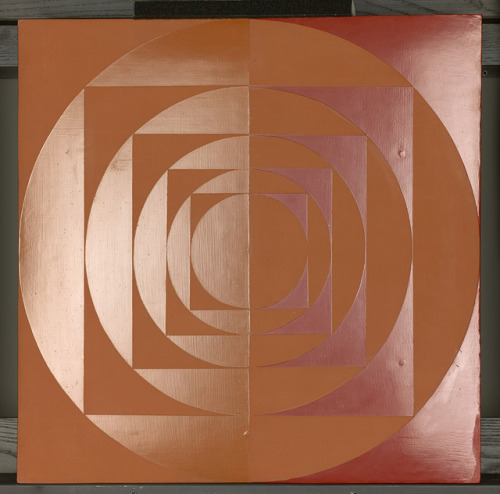One painting, front, back, and in different light.Notice the glossy parts? This was painted with two
One painting, front, back, and in different light.Notice the glossy parts? This was painted with two types of house paint that have different levels of gloss. Artists in Brazil in the 1950’s took advantage of fast-drying industrial paints new on the market.Concrete artists in Buenos Aires like Hermelindo Fiaminghi (work above) were interested in experimenting with paint types and application techniques. The combination of these factors made some works look more like industrially produced objects, however, paint was applied and manipulated by the artist’s hand.Hermelindo Fiaminghi is one of the Concrete artists on view currently in Making Art Concrete, on view until February 11. A show that asks, “What is the role of art in society?” Artists after WW2 in Argentina and Brazil were grappling with this question and rejected traditional painting to create artwork so precise in conception and execution that it formed its own material, or “concrete,” reality.These “Concrete artists” were interested in experimenting with format, shape, construction, paint and material—art was to be a part of everyday life.Making Art Concrete is one of four #PSTLALA exhibitions currently on view at the Getty Center that spotlight Latin American art and Latino/a artists in relationship to Los Angeles.Seccionado no. 1/ Sectioned No.1, 1958, Hermelindo Fiaminghi, alkyd on hardboard. Colección Patricia Phelps de Cisneros. © Estate of Hermelindo Fiaminghi -- source link
#pstlala#hermelindo fiaminghi#painting#cisneros collection




